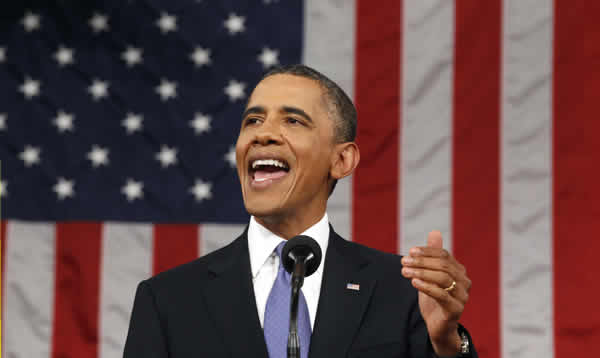Washington in a Flash: Same Old, Same Old in Obama’s Deficit Plan
Lachlan Markay /
Driving the conversation: President Obama released his deficit reduction plan on Monday, which would reduce the national debt by $3 trillion over ten years through a variety of tax hikes, superficial cuts to Medicare and Medicaid, and by incorporating savings gleaned from drawing down America’s military presence in the Middle East.
Taxes: As he is wont to do, Obama called on Congress – specifically, the supercommittee – to reform the tax code. The only tax changes included in the president’s plan are – surprise! – tax hikes. Those will include raising income taxes on top earners by letting the Bush-era tax rates expire, and enacting a measure that the president has taken to calling the “Buffett Rule.” The measure would establish a new minimum tax rate for millionaires. Since the wealthiest Americans already pay a larger portion of their earnings in federal income tax, that can only mean increases in other areas of the tax code – the name of the measure suggests hikes in the death or capital gains taxes.
Entitlements: A White House statement claims the president’s plan to slash hundreds of billions from health care entitlements will “strengthen Medicare and Medicaid so that these vital programs remain strong and healthy to serve Americans for years to come.” While that may sound eerily like Paul Ryan circa May 2011, the president’s plan doesn’t actually reform the two programs. Instead, it gleans savings primarily from slashing payments to doctors – which will exacerbate Medicare’s looming doctor shortage catastrophe – in order to extend the solvency of its trust fund by a mere three years. Structurally, Medicare will remain the same.
Defense spending: A trillion of the proposed savings included in the plan are being double counted, in a sense. By including the defense savings that will occur as the president draws down America’s presence in Iraq and Afghanistan, Obama is able to tout another $1 trillion in savings as part of his plan, even though those savings will occur with or without the passage of his proposal.
Since Obama’s proposal has little chance of winning in Congress – indeed, his tax plan has already been rejected by members of both parties – one can’t help but conclude that to the extent the measure is aimed at combating unemployment, it’s less about creating jobs and more about saving them – well, saving one job in particular.
(-1) + (1) equals…: President Obama spoke from the White House Rose Garden Monday morning to defend The President said that his jobs plan is not an act of ‘class warfare,’ but in fact, it is simply ‘math.’
The plot thickens…again: Yet another Obama donor has been linked to failed solar manufacturer Solyndra. “Steve Spinner, who helped monitor the Energy Department’s issuance of $25 billion in government loan guarantees to renewable energy projects, was one of Obama’s top fundraisers in 2008 and is raising money for the president’s 2012 reelection campaign,” the Chicago Tribune reported.
Spinner had the sense to recuse himself from the decision to award Solyndra a $535 million loan guarantee, because his wife’s law firm represented the company. Spinner is heaving a sigh of relief that he made the right decision, but the story will likely fuel ongoing investigations into whether the company’s political connections helped it secure that loan guarantee.
I can see clearly now: Tim Carney’s latest column broadens the scope of the Solyndra discussion and calls on readers to look at the crony capitalism of which both parties are guilty.
The price you pay to play the game: The Kaiser Family Foundation donated to political cause formerly lead by Michelle Obama several days before the$535 million government loan to Solyndra was approved, reported The Daily Caller:
A $10,000 donation to the Urban Health Initiative at the University of Chicago Medical Center appears on the group’s 2009 tax forms. It was also in 2009 that Kaiser successfully sought to lock down a loan guarantee for the green-energy company Solyndra through his two investment vehicles: Argonaut Ventures and the GKFF Investment Company.
The sum is small in comparison, but reveals how intricate the Solyndra web truly is.

